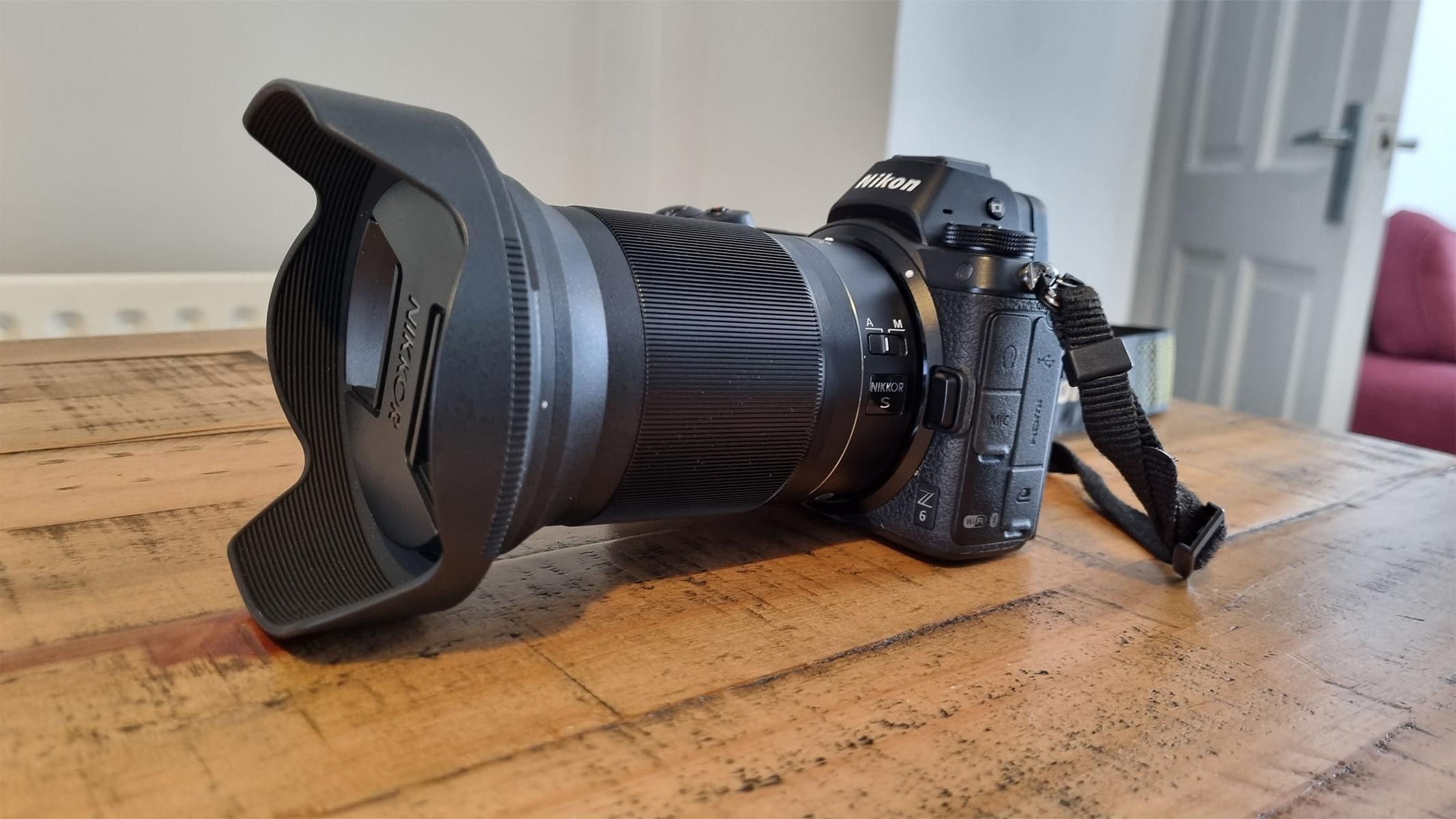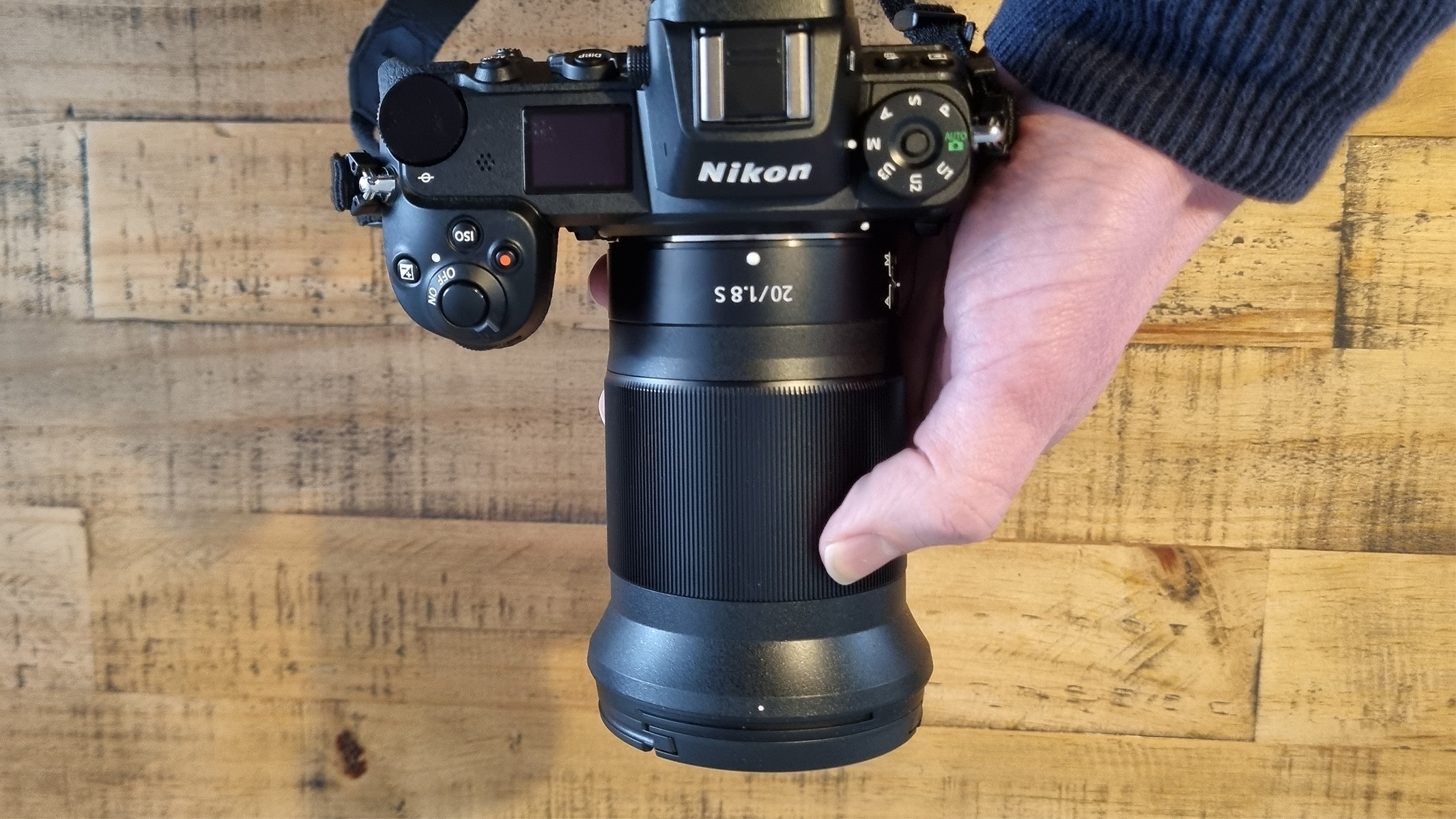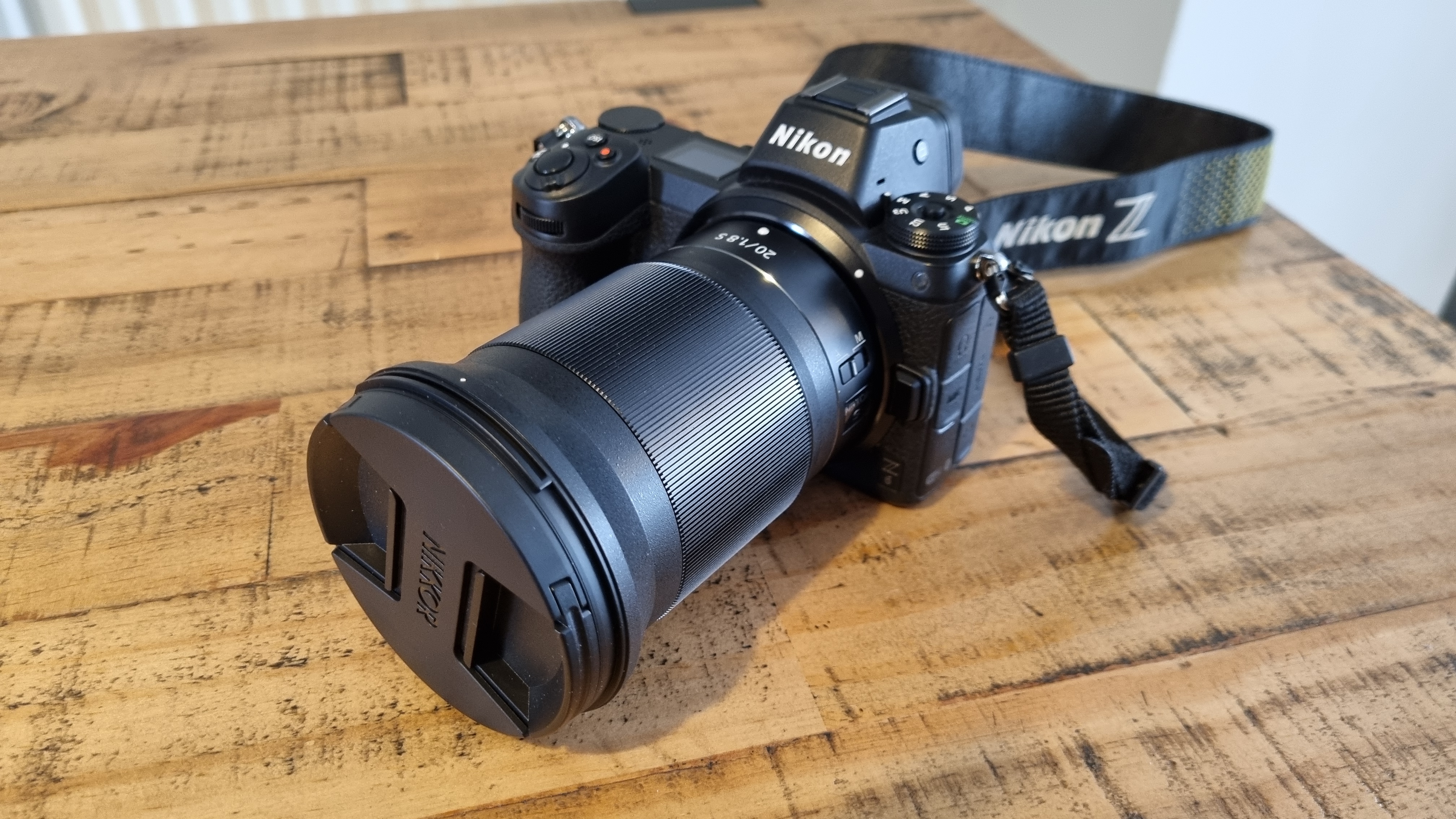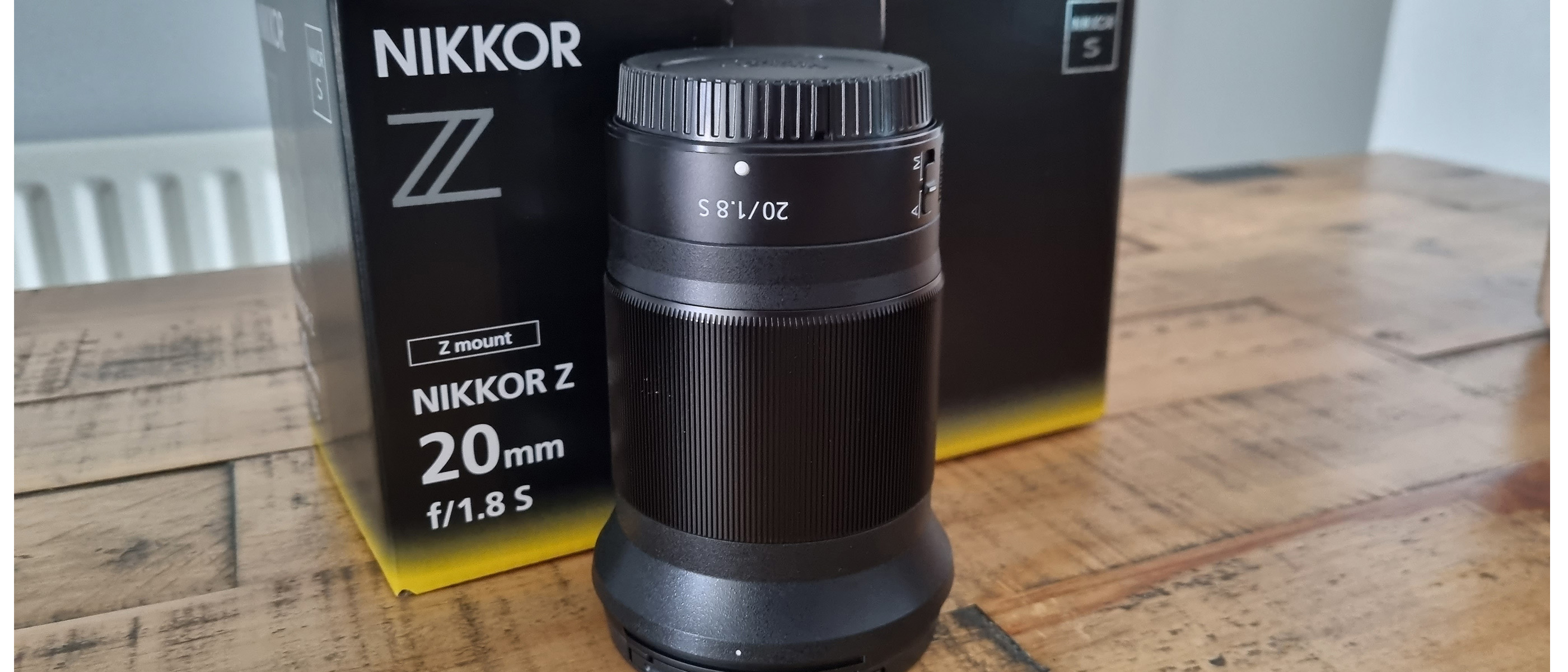Space Verdict
For astro and landscape photographers, this is probably the best Nikon mirrorless lens you can get thanks to that wide angle and superior f/1.8 max aperture. It's highly specialized, though, and comes at an eye-watering cost.
Pros
- +
f/1.8 is perfect for astro
- +
Amazing build quality
- +
Easy to apply filters
Cons
- -
It's expensive
- -
Longer barrel than most wide primes
Why you can trust Space.com
As Nikon continues to expand its mirrorless lens line-up, we're getting more and more options when it comes to shooting astro. In that sense, the Nikon Z 20mm f/1.8 S prime lens is fast becoming a specialized piece of equipment. It doesn't have the flexibility of the Nikon AF-S 14-24mm f/2.8G, nor the beginner appeal of the Nikon Z 14-30mm f/4 S, nor the awesome value of the Nikon Z 40mm f/2. What it is, though, is a brilliant astro lens for anyone shooting landscapes of the night sky. It has the uncompromising quality of the S-Line series of mirrorless lenses, pin-sharp edge-to-edge clarity, and that all-important lower f-number, which is essential for serious star shooting.
Type: 20mm prime
Aperture range: f/1.8 - f/16
Minimum focal length: 200mm
Thread size: 77mm
Weight: 1lb 1.9oz
As you'd expect, the Nikon Z 20mm f/1.8 S comes at a high price, and because it isn't one of the Holy Trinity of Z series lenses, you won't often see it included in sales and discount events.
You're going to have to pay at least $1200 for what is a precision piece of kit, and if astro isn't your main style, there are other landscape lenses, like the excellent Nikon Z 14-30mm f/4 S, which probably provide better value for money. All of which sounds a little like we're putting the 20mm f/1.8 down. To be clear, as a piece of night sky shooting kit, this is one of the best astrophotography lenses you can buy.
Nikon Z 20mm f/1.8 S: Design

- Simple, no-fuss design
- Sturdy build, weather sealed
- Relatively long barrel
If we were to describe the design of the Nikon Z 20mm f/1.8 S in a single word, it would be 'functional.' As prime lenses go, it's pretty long (4.3-inches tip to tip), making it the same size as a standard zoom or longer-ranged prime. The reason for this, in part, is that the convex wide lens inside the barrel is enclosed in a flat piece of glass at the tip of the lens, which means this wide-angle is fully compatible with all filters, including screw-on polarizers. It also comes with a standard tulip hood, which you'll need if you're using this lens for daylight landscapes. With a 77mm thread, you're not looking at finding unusual sizes either, accessories as easy to find as they are to fit.
The rest of the lens contains 14 elements in 11 groups, all of which are of the highest quality, as you'd expect from Nikon's mirrorless lenses. There's no fuss elsewhere, just a substantial ring for adjusting your focus and a button that toggles between manual and autofocus modes. Resistance on the focusing ring is just right, slick enough, but not too loose that you can't make fine focusing adjustments. There are no custom-setting options or digital displays like you see on the Nikon Z 70-200mm f/2.8.We see this as a good thing. There's a decent amount of grip to allow precise manual focusing, and we appreciated this when setting focus in the dark.
Finally, and perhaps essentially, this lens is weather-sealed, so you don't have to worry about things like dust, sand, or rain creeping in. Nikon's weather sealing is excellent across the S-Line Z-mount lenses, and the 20mm is no exception.
Nikon 20mm f/1.8 Z: Performance

- The wide f/1.8 aperture makes a massive difference to astrophotos
- Almost no fisheye distortion
- 20mm is pleasingly wide, but some may miss the zoom
It's in the performance where the Nikon Z 20mm f/1.8 S shines. That ability to drop down to f/1.8 makes a huge difference to night sky shots. We got crisp, pin-sharp starry sky photos using 8-15 second exposures and a relatively low ISO of about 1000. This was in rural areas where light pollution was a minor factor, but not wholly absent. We tested with a Nikon Z6, which barely breaks a sweat at even ISO 3200. The clarity is superb, right to the edge of the image, and the color and light consistency is excellent. While it largely depends on your camera, this lens performs extremely well in all low-light situations (again, thanks to that wide aperture) and can be great for interiors and landscapes.
If you're shooting landscapes with foreground interest, this lens performs superbly well. That 20cm focusing distance is adequate for bringing a sense of scale and distance into your landscapes. When using it to lock on to the foreground, we found the autofocus was quick, accurate, and quiet, exactly what you'd expect. It rarely struggled during our test conditions, even in low light.
One minor concern is that it has no zoom, an advantage that a lens like the Nikon Z 14-24mm f/2.8 S lens has over this fixed prime. But we only found this an issue when trying to cut out unwanted foreground subjects and couldn't simply relocate our tripod. What is pleasing, though, is that the fisheye effect you get from some wide-angle lenses is almost entirely absent here. We only noticed distortion when shooting distinct, straight lines with the camera in portrait orientation. This is, first and foremost, a landscape lens designed to make your skies as huge as possible.
For those looking to capture motion in their low-light photos, like traffic light trails, be aware that the maximum aperture here is f/16. This is fine in most situations, but some may struggle to make your scenes dark enough for longer light trails when shooting at dusk, for this we'd suggest using a neutral density filter to darken the scene appropriately. This lens is designed to let light in, not keep it out.
Nikon 20mm f/1.8 Z: Functionality

- Limited functions outside astro
- Good for tight interiors
- A very no-frills lens
Our biggest concern with the Nikon 20mm f/1.8 is that it's a prime, and an expensive one at that. While it's perfect for astrophotography, it bosses landscapes, star trails, and Milky Way shots but has limited use elsewhere. That width means that you barely see the moon in any lunar landscapes, and it also means you can get a lot of unwanted foreground clutter unless you're careful with your framing. Finessing a shot with this lens comes down to camera position and where you can fit the tripod above all else.
While the f/1.8 is great for portraits (perhaps a little too open for a lens of this width as we tended to bump down to f/2.8 to get pictures of people comfortably in focus), you do have to get right up into someone's face for a decent shot. It also has extremely limited use outside of big, sweeping landscapes. Because of this, we'd heartily recommend a 35mm prime if you're looking for the flexibility to shoot landscapes and portraits.
What surprised us is how good it is for interior shots, especially in darker locations like grand churches and older, quirkier buildings. Even using this lens handheld, you can get a great sense of a room in all but the lowest of lights. If you're a property photographer or plan to photograph smaller, more intimate weddings, this could be a fun tool in your arsenal. As a street lens, it isn't all that great, and we'd prefer to stick to longer primes than use this one.
Should you buy the Nikon Z 20mm f/1.8 S?
How serious are you when it comes to astro and overall landscape photography? If you're intent on getting the best astro shots, and you have that $1200+ to spend, you should get this lens in your kit bag immediately. It's simple, no fuss, tough, and designed to give you the ability to add filters and tweak your shots with any accessory you need. The quality of images it generates is second to none, and while you might miss the ability to shift down to 14mm or go up to 30mm, we think that having those extra stops down to f/1.8 is more of an astro essential.
If you're just looking for a good landscape lens or want something more flexible for different photo styles, this isn't for you. You'll get better value from other primes or some of Nikon's other wide, mirrorless lenses. Not everyone can simply drop $1200 on a lens they may not take out of their bag more than two or three times per year. The Nikon Z 20mm f/1.8 S is a highly specialized, finely tuned piece of kit that's laser-targeted at the astro crowd. But you're on Space.com, so that's exactly what you need, right?
If this product isn’t for you
As you've probably already seen from the rest of the review, a 20mm prime isn't for everyone. If you're looking to do astro on more of a budget, we'd probably recommend the new Nikon Z 28mm f/2.8. No, it isn't as wide, but it's only 0.8 of an f-stop narrower and all for around $300, which is an absolute bargain.
If you want more flexibility, and you've got deep pockets, the Nikon Z 14-24mm f/2.8 S is an absolute titan of a lens. At $2300, though, it isn't cheap, and we'd suggest that the benefits of expanding out to 14mm probably don't outweigh the ability to drop to f/1.8. Sure, the Nikon Z 14-24mm f/2.8 S is a more versatile lens, but it's nearly double the price.
We'd also suggest that the Nikon Z 14-30mm f/4 S lens is an excellent option for landscape photographers simply looking to dip their toes into astro. No, you won't get pin-sharp star images at f/4, but you will have lovely low-light landscapes and better daytime shot options. It's about the same price as the 20mm prime too.
Related Articles
Join our Space Forums to keep talking space on the latest missions, night sky and more! And if you have a news tip, correction or comment, let us know at: community@space.com.

Andy is a Content Director who has been working in media for over 20 years. Andy has run several brands during his career, including Top Ten Reviews, GamesRadar, and a suite of magazines. He is also a part time tutor in Game Design, a photographer, and a mentor. Andy specializes in landscape and urban photography, but also takes pictures of the moon and night sky. In his spare time, he enjoys building Lego with his son and watching all kinds of sci-fi TV.











